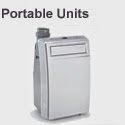This inspection process will help you to understand how EWC make sure the AC meet up clients' standard.
The inspection include three parts:evaporator,panel appearance&carton box design.
1.Evaporator
In this process,EWC will check the evaporator's fin space,number of tubes&tube's diameter.
As evaporator is most important for IDU,so EWC pay really close attention on it.
2.Panel appearance
In this process,EWC will check the panel's logo,disply position&whole unit appearance.
Only in this way can we make sure the panel will be as beautiful as you expected.
3.Carton box design
Most clients care less about the design of carton box,but according to our investigation of the end customer,
actually their first impression about your products&company is coming from your carton box.
That's the reason why EWC hired a professional designer and design specifically for every clients.
We asure you the beautiful carton box will improve the company&product image.
Carton box for Econo air
Carton box for Fujibishi
The next inspection process will include the ODU parts:condenser,compressor&fan motor.
Due to space limitations,further details will not be showed here.
All in all,actions speak louder than words.
EWC is willing to take the actual movement to ensure our products' quality.
Meanwhile,further services like the carton box design is also provided which will improve the customer experience.
.jpg)
.jpg)
.jpg)
.jpg)
.jpg)
.jpg)
.jpg)
.jpg)















